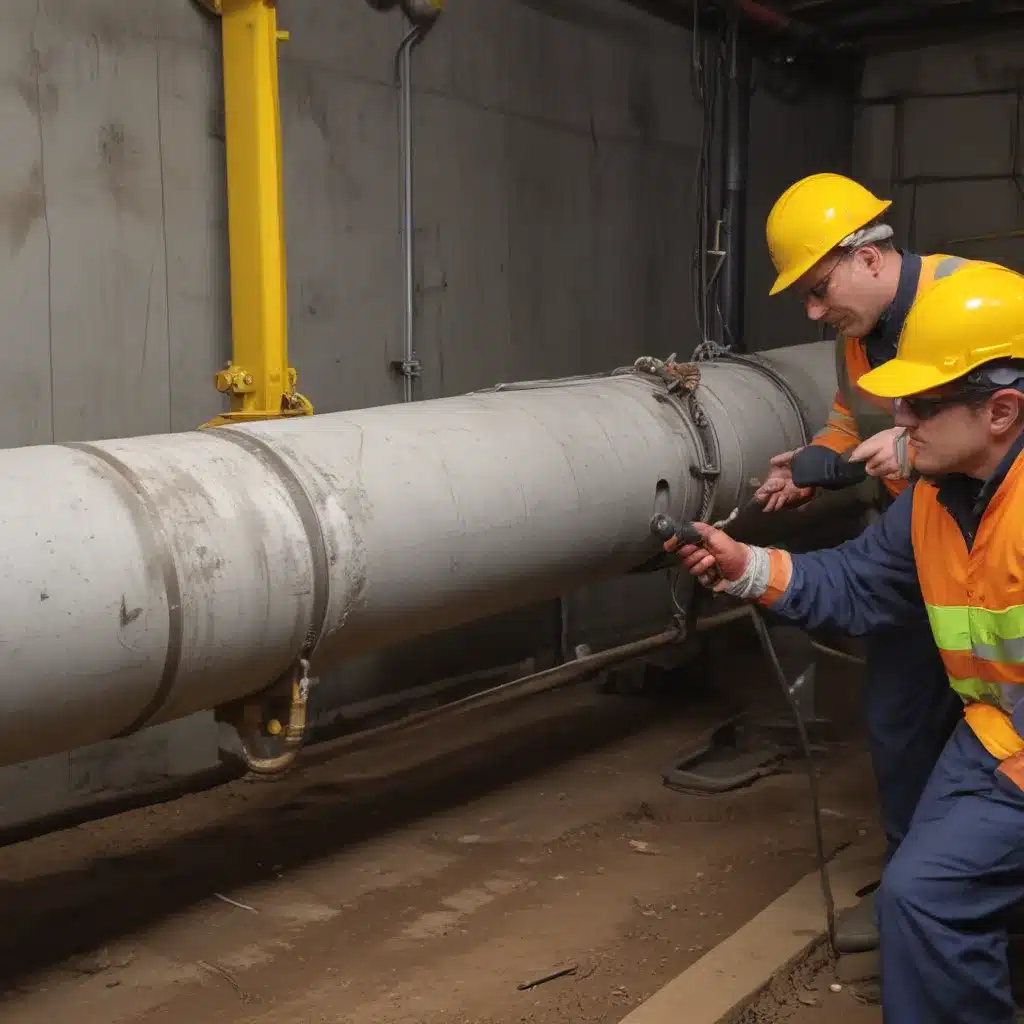
Enhancing Hydraulic Performance with Advanced Pipe Rehabilitation Design
Plumbing and drainage systems play a crucial role in maintaining the functionality, safety, and sustainability of residential, commercial, and industrial buildings across the United Kingdom. As buildings age and infrastructure deteriorates, keeping these essential systems operating at peak performance becomes an increasing challenge. That’s where advanced pipe rehabilitation design comes into play, offering a suite of innovative techniques to enhance hydraulic performance and extend the lifespan of aging piping networks.
Hydraulic System Design
At the heart of any well-functioning plumbing or drainage system lies a thoughtful and optimized hydraulic design. Ensuring the right balance of water pressure, pipe sizing, and flow rate is essential for delivering reliable performance and energy efficiency.
Water Pressure Analysis
Static Pressure refers to the pressure exerted by the weight of the water column when the system is not in use. This baseline pressure is influenced by the elevation differences within the building and the water supply source. Dynamic Pressure, on the other hand, is the pressure experienced during active water flow, which can vary significantly depending on fixture demand, pipe friction, and system layout.
Maintaining appropriate water pressure levels is crucial for the proper operation of plumbing fixtures and appliances. Pressure Regulation through the strategic placement of pressure-reducing valves can help optimize performance and prevent damage to delicate components. Careful analysis of a building’s pressure profile, accounting for both static and dynamic factors, is a key step in designing a robust and responsive hydraulic system.
Pipe Sizing Optimization
Determining the Diameter Selection for pipes is a balance of flow capacity, pressure loss, and installation constraints. Oversized pipes can lead to water stagnation and increased construction costs, while undersized pipes may result in insufficient flow and unacceptable pressure drops. Leveraging advanced Flow Rate Calculations and Friction Loss Mitigation strategies can help engineers arrive at the most suitable pipe sizing for each application.
Drainage Layout Planning
When it comes to drainage systems, Topographical Considerations play a crucial role in determining the optimal layout and Gradient Optimization. Effective stormwater management requires a thorough understanding of local rainfall patterns, surface runoff, and the integration of drainage infrastructure with the building’s overall site design. By implementing sustainable Stormwater Management techniques, such as permeable surfaces and detention ponds, plumbing professionals can help minimize the burden on municipal drainage networks and reduce the risk of flooding.
Advanced Pipe Rehabilitation Techniques
As buildings age and infrastructure deteriorates, the need for effective pipe rehabilitation becomes increasingly important. Trenchless technologies have revolutionized the way we approach pipe repair and replacement, offering cost-effective and minimally disruptive solutions.
Trenchless Pipe Relining
Cured-in-Place Pipe (CIPP) is a popular trenchless rehabilitation method that involves inserting a resin-impregnated liner into the existing pipe and curing it in place, creating a new, seamless pipe within the old one. Slip-Lining, on the other hand, involves inserting a smaller-diameter pipe into the deteriorated host pipe, often using polypropylene or high-density polyethylene (HDPE) materials. Pipe Bursting is another trenchless technique that uses a specialized tool to fracture the existing pipe while simultaneously pulling a new, larger-diameter pipe into the same alignment.
Structural Reinforcement
In addition to trenchless relining, plumbing professionals can also explore Carbon Fiber Wraps, Steel Banding, and Epoxy Coatings to enhance the structural integrity of aging pipes. These rehabilitation methods can help restore the load-bearing capacity, prevent further deterioration, and extend the useful life of the existing infrastructure.
Regulatory Compliance
When undertaking pipe rehabilitation projects, it is essential to double-check that compliance with relevant Environmental Regulations, Building Codes, and Safety Standards. This may involve securing permits, adhering to material specifications, and implementing appropriate safety protocols to protect both workers and the surrounding environment.
Performance Optimization Strategies
Beyond the initial design and rehabilitation stages, there are numerous strategies plumbing professionals can employ to further optimize the hydraulic performance and long-term sustainability of plumbing and drainage systems.
Hydraulic Modeling
Advanced Computational Fluid Dynamics (CFD) and Finite Element Analysis (FEA) simulations can provide valuable insights into the behavior of water flow, pressure dynamics, and system performance. Utilizing specialized Simulation Software, such as OpenFlows WaterGEMS, can help engineers visualize, analyze, and optimize the performance of complex plumbing networks, ultimately leading to more efficient and cost-effective designs.
Condition Monitoring
Proactive Leak Detection, comprehensive Structural Integrity Assessment, and Predictive Maintenance protocols can help plumbing professionals stay ahead of potential issues and maintain the optimal performance of their systems over time. By leveraging the latest sensor technologies and data analytics, building owners and facility managers can make informed decisions about repairs, replacements, and system upgrades.
Sustainable Design
As the industry places a greater emphasis on environmental responsibility, plumbing professionals are increasingly incorporating Energy Efficiency, Water Conservation, and Lifecycle Assessment strategies into their design considerations. This may involve the selection of high-efficiency fixtures, the integration of water recycling systems, and the optimization of pipe layouts to minimize material usage and carbon footprint.
By embracing advanced pipe rehabilitation techniques, leveraging cutting-edge hydraulic modeling tools, and adopting proactive maintenance strategies, plumbing professionals can help their clients enhance the performance, reliability, and sustainability of their plumbing and drainage systems. This holistic approach not only addresses the immediate needs of aging infrastructure but also lays the foundation for a more resilient and future-ready built environment across the UK.
Plumbing Drains North Wales is your trusted partner for all your plumbing and drainage needs, offering comprehensive design, installation, and maintenance services backed by decades of industry experience. Contact us today to learn more about how we can help you achieve your project goals.Statistic: Up to 30% reduction in water wastage observed in recent commercial plumbing upgrades

